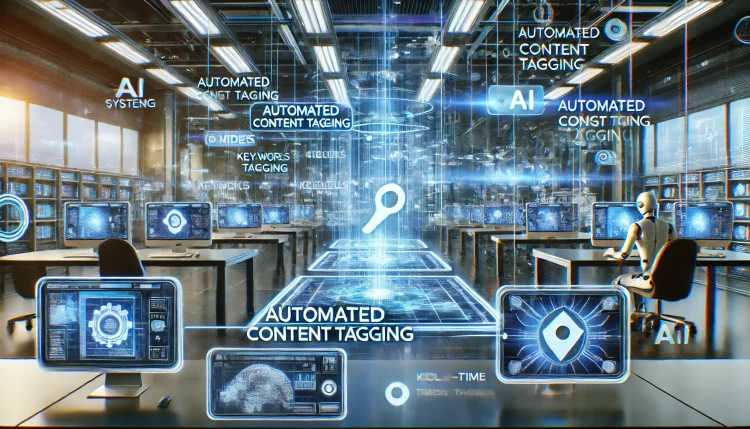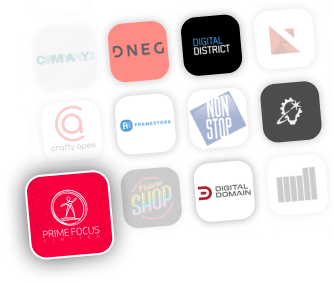automated content tagging
In today’s fast-paced entertainment landscape, automated content tagging has emerged as a game-changing technology. This innovative approach is revolutionizing how media companies organize, manage, and distribute their vast content libraries. Our comprehensive guide explores the transformative power of automated content tagging and its impact on the entertainment industry.

Understanding Automated Content Tagging in Entertainment
Automated content tagging is an AI-driven process that automatically assigns relevant metadata to digital content. In the entertainment industry, this technology streamlines the categorization and organization of various media types, including videos, images, and audio files.
Key benefits of automated content tagging include:
- Improved content discovery
- Enhanced search functionality
- Streamlined workflows
- Personalized user experiences
- Increased content monetization opportunities
By leveraging machine learning algorithms, automated tagging systems can analyze content at scale, saving time and resources while improving accuracy.
Looking for VFX
Experts or Projects?
Join Vitrina to Expand Your Global Entertainment Network
- Promote
Your VFX
Services. - Connect
with Vendors &
Studios Worldwide. - Discover
New Projects &
Opportunities - Find
Trusted VFX
Partners.

The Evolution of Content Tagging in Media
Historically, content tagging in the entertainment industry was a manual and time-consuming process. Media professionals would spend hours meticulously labeling and categorizing content. This approach was not only inefficient but also prone to human error and inconsistencies.
The advent of automated content tagging has transformed this landscape:
- Increased efficiency: AI-powered systems can tag thousands of content pieces in minutes
- Improved accuracy: Machine learning algorithms ensure consistent and precise tagging
- Scalability: Automated systems can handle growing content libraries with ease
As the volume of digital content continues to explode, automated tagging has become an essential tool for media companies to stay competitive and organized.
How Automated Content Tagging Works
Automated content tagging relies on sophisticated algorithms and machine learning models to analyze and categorize content. Here’s a simplified overview of the process:
- Content ingestion: The system ingests digital content (videos, images, audio)
- Analysis: AI algorithms analyze the content’s visual, audio, and textual elements
- Feature extraction: Key features and attributes are identified and extracted
- Tag assignment: Relevant tags are automatically assigned based on the extracted features
- Metadata generation: Comprehensive metadata is created for each content piece
Advanced systems can even recognize specific objects, faces, scenes, and emotions, providing rich and detailed tagging.
Ready to explore how automated content tagging can transform your media business? Sign up for Vitrina to discover cutting-edge solutions and connect with industry leaders!
Looking for Global VFX Projects?
Create your profile on Vitrina!
- Promote your VFX studio.
- Connect with global studios.
- Showcase projects & clients.
- Find projects matching your expertise.

Automated content tagging has wide-ranging applications across the entertainment industry:
- Video streaming platforms: Improve content recommendations and search functionality
- Music streaming services: Enhance playlist creation and song discovery
- Stock media libraries: Streamline asset management and licensing processes
- Social media platforms: Improve content moderation and user-generated content organization
- Broadcasting networks: Optimize content archiving and retrieval systems
For example, Netflix uses automated content tagging to analyze and categorize its vast library of movies and TV shows. This enables personalized recommendations and improves the overall user experience.
Similarly, Spotify leverages automated tagging to analyze millions of songs, helping users discover new music and creating dynamic playlists based on mood, genre, and listening habits.
To learn more about companies revolutionizing automated content tagging in entertainment, create your free account on Vitrina and connect with industry leaders for detailed insights.
Implementing automated content tagging offers numerous advantages for entertainment businesses:
- Improved content discovery: Users can easily find relevant content, increasing engagement
- Enhanced metadata quality: Consistent and accurate tags improve search functionality
- Increased operational efficiency: Automation reduces manual tagging efforts
- Better content monetization: Improved discoverability leads to higher content consumption
- Data-driven insights: Rich metadata enables advanced analytics and decision-making
- Scalability: Easily manage growing content libraries without additional resources
By leveraging automated tagging, media companies can focus on creating compelling content while AI handles the tedious task of organization and categorization.
While automated content tagging offers significant benefits, there are some challenges to consider:
- Initial setup costs: Implementing AI-powered systems may require substantial investment
- Training and fine-tuning: Models need to be trained on industry-specific data for optimal performance
- Integration with existing systems: Ensuring seamless integration with current workflows
- Data privacy concerns: Handling sensitive content and user data responsibly
- Balancing automation with human expertise for quality control
To overcome these challenges, it’s crucial to partner with experienced providers and develop a comprehensive implementation strategy.
Discover how leading entertainment companies are addressing these challenges. Sign up for Vitrina to access valuable insights and connect with industry experts!
Summary
Automated content tagging is revolutionizing the entertainment industry by streamlining content management, improving discoverability, and enhancing user experiences. This AI-driven technology offers numerous benefits, including increased efficiency, improved metadata quality, and better content monetization opportunities. While challenges exist, the advantages far outweigh the hurdles. By leveraging platforms like Vitrina, entertainment companies can stay at the forefront of this transformative technology, connecting with industry leaders and accessing valuable insights to implement successful automated content tagging strategies.
Automated content tagging is an AI-driven process that automatically assigns relevant metadata to digital content such as videos, images, and audio files in the entertainment industry. It uses machine learning algorithms to analyze and categorize content at scale, improving efficiency and accuracy in content management.
Automated content tagging offers several benefits, including improved content discovery, enhanced metadata quality, increased operational efficiency, better content monetization, data-driven insights, and scalability in managing growing content libraries.
Challenges include initial setup costs, the need for training and fine-tuning AI models, integration with existing systems, addressing data privacy concerns, and maintaining a balance between automation and human oversight for quality control.
Vitrina provides a platform for entertainment companies to access insights on automated content tagging, connect with leading solution providers, discover innovative companies in the field, gain industry-specific knowledge, and facilitate partnerships to enhance their content tagging strategies.








































































